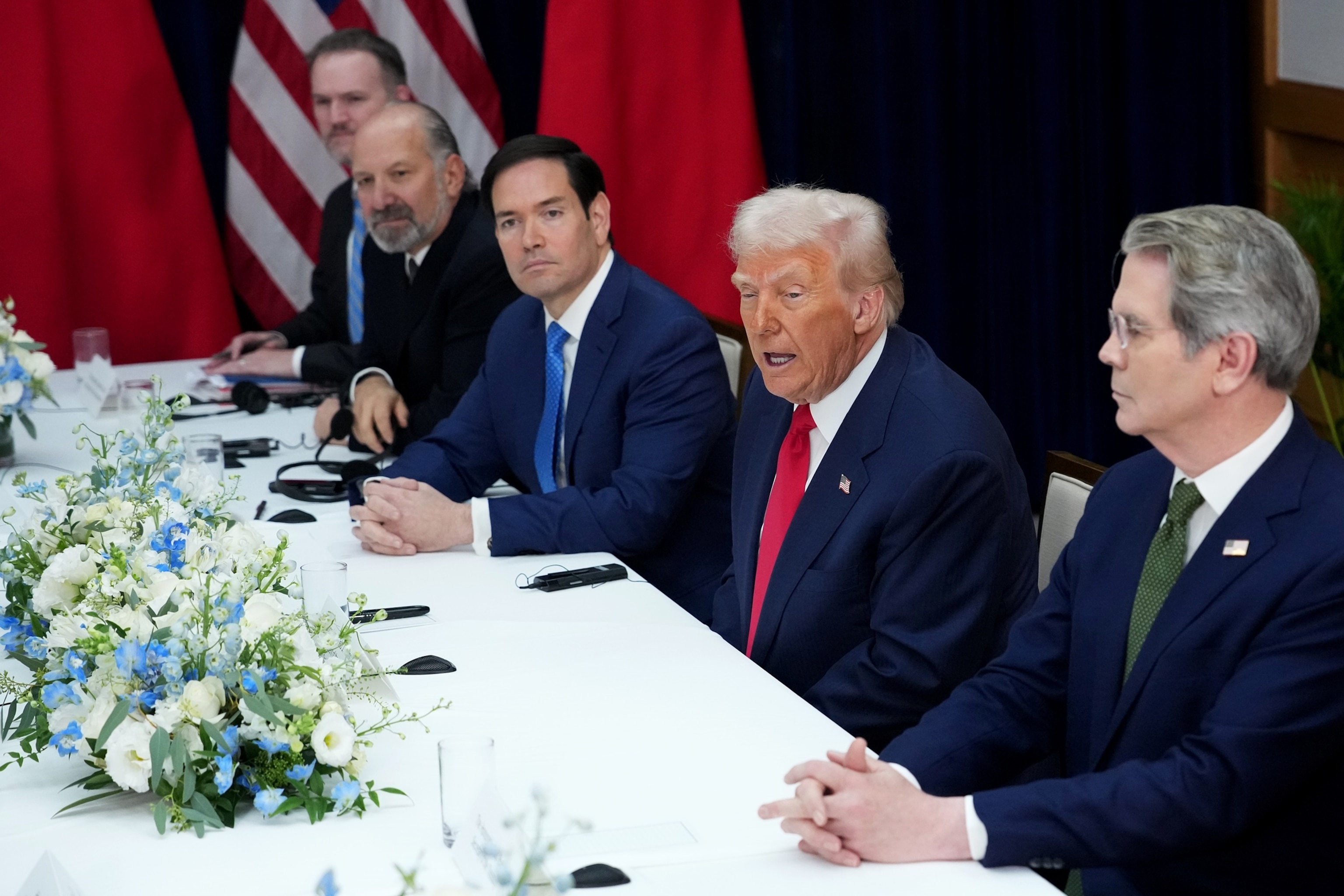A short-term deal reached between the United States and China early Thursday appeared to set back a months-long trade war between the world’s two largest economies, carrying implications for everyone from smartphone buyers to soybean farmers.
The deal came after a high-stakes meeting between US President Donald Trump and Chinese President Xi Jinping, the first in-person meeting of the two leaders since Trump took office for his second term.
Some trade experts who spoke to ABC News indicated that both sides had won notable concessions, although the ultimate impact may depend on whether the deal can withstand fickle U.S.-China relations.
Trump said Thursday that the 20% tariffs on China related to fentanyl would be reduced to 10%, raising the total effective tax rate on Chinese imports from 57% to 47%.
The one-year deal also addresses other issues, such as U.S. access to critical rare earth minerals and the Chinese soybean market, Trump said. The fate of social media platform TikTok remains unclear after the deal, but a thaw in tensions could influence a possible sale, some experts said.
“This is progress,” Kaiser Kuo, host of the “Sinica Podcast,” a US-based podcast about current affairs in China, told ABC News. “Whether it will endure remains to be seen.”
rare earth minerals
Beijing said it would delay imposing dramatic restrictions on rare earth minerals, key materials for the production of computer chips needed for products ranging from smartphones to artificial intelligence and defense technology.
The Chinese Ministry of Commerce confirmed the temporary suspension of these restrictions in an official statement. Trump said he believes the one-year agreement will be expanded “routinely.”
China dominates global rare earth production, accounting for about 60% of rare earth mining and about 90% of processing capacity, according to the Center for Strategic and International Studies.
Had China followed through with the threatened restrictions, the policy would have crippled U.S. production in key sectors, Dennis Wilder, a Georgetown University professor and former White House National Security Council official, told ABC News.
“The Chinese withdrawal here is real,” Wilders added, but warned that the yet-to-be-seen details of the engagement would determine whether U.S. access to rare earth minerals will end up being fully restored.
“The United States is very dependent and will be for several years,” Wilders said, estimating that it would take the United States 5 to 10 years to establish a domestic supply of rare earth minerals.

President Donald Trump speaks during a bilateral meeting with Chinese President Xi Jinping at Gimhae Air Base on October 30, 2025 in Busan, South Korea.
Andrew Harnik/Getty Images
soybean farmers
Trump also said Xi had “authorized China to begin purchasing massive quantities of soybeans, sorghum and other agricultural products.”
On Thursday, US Treasury Secretary Scott Bessent said fox business that China had agreed to buy 12 million metric tons of soybeans from American farmers this year, as well as at least 25 million metric tons over each of the next three years. Such volume would return Chinese soybean purchases to annual levels recorded before recent trade tensions.
Trump had previously drawn criticism from some U.S. soybean farmers who suffered losses amid the U.S.-China trade war.
Joe Janzen, a professor at the University of Illinois and its FarmDoc project, said the deal could ease a major fear among U.S. soybean farmers about a continued loss of Chinese purchases and the drop in soybean prices that would have occurred.
“The concern has been about expectations for the future and how things could get worse,” Janzen said. “This agreement reflects what some people in the sector were thinking: there has to be a resolution to this conflict that means we should not see dramatically lower prices for soybeans.”
But Janzen cautioned: “The market still has to process to what extent it believes this is really binding in the medium and long term.” He pointed to China’s failure to comply with the terms of a commitment on soybean purchases drawn up in a “phase one” trade deal reached during Trump’s first term.
tiktok
Last month, Trump announced a deal that would pave the way for social media giant TikTok to come under the control of a group of American investors.
Before Wednesday’s meeting, China had not given its public approval to the deal, leaving the fate of a potential US-based TikTok uncertain. China continued to withhold its approval after the summit, saying only that it would work with the United States to “properly address” the issue.
Still, Bessent told Fox News on Thursday that China had “finalized” its approval in recent days.
“I would expect this to move forward in the coming weeks and months, and eventually we will see a solution,” Bessent added.
The potential end to the standoff comes 10 months after a ban on the China-based app went into effect in January. Instead, Trump delayed the ban several times, while assuring app stores and server companies that they would not face sanctions in the meantime.
Alan Rozenshtein, a law professor at the University of Minnesota who has closely followed the TikTok ban, said he would wait for a firm, detailed agreement before weighing in on whether TikTok had met the divestment required to lift the ban.
“It’s been so chaotic that until there’s a signed piece of paper, I’ll wait somewhere to have an opinion,” Rozenshtein said.
Scrutiny has focused on the fate of TikTok’s algorithm, a proprietary formula that powers the flashy social media platform. American critics have raised concerns about possible Chinese manipulation of content if the algorithm remains owned by a company based in China.
Georgetown’s Wilder said the algorithm may be a sticking point in the sale of TikTok, as the Chinese view the algorithm as valuable intellectual property, while some U.S. officials consider it a critical part of any deal.
“It seems to me that one side is going to have to give in on this issue and so far neither side has shown a willingness to do so,” Wilder said.
Jack Moore and David Brennan of ABC News contributed to this report.


